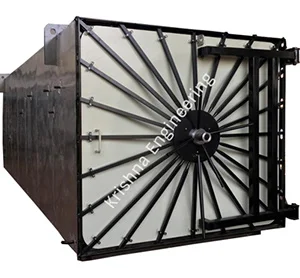
Sterilization is a critical process used across various industries to eliminate or destroy all forms of microbial life, including bacteria, viruses, fungi, and spores. It ensures the safety and efficacy of medical devices, pharmaceuticals, food products, and laboratory equipment. Sterilization methods can be classified based on various factors such as the mechanism of action, application, and physical or chemical nature. In this article, we will delve into the classification of sterilization methods, highlighting their principles and applications.Sterilization is the removal of all forms of microorganisms from the surface of an object. It includes both spore and vegetative forms. Here, let’s glance at the definition and classification of sterilization notes.
Physical sterilization methods rely on physical agents such as heat, radiation, and filtration to achieve microbial destruction. These methods are widely used due to their effectiveness and compatibility with heat-resistant materials.
Ethylene oxide (ETO) sterilization involves exposing the material to a mixture of ETO gas and other chemicals under controlled conditions. It is effective against a wide range of microorganisms and is commonly used for medical devices, electronic components, and pharmaceutical products.
Heat sterilization is one of the oldest and most reliable methods. It involves the application of heat to destroy microorganisms. There are two primary heat sterilization techniques:
Dry heat sterilization utilizes hot air or flames to raise the temperature of the material being sterilized. It is commonly used for heat-resistant medical instruments, glassware, and powders.
Steam under pressure is used in moist heat sterilization, such as autoclaving, to reach temperatures higher than boiling water. It is used on surgical instruments, lab equipment, and microbiological media and is very effective against a variety of microorganisms.
Ionizing radiation, such as gamma rays, X-rays, or electron beams, is used in radiation sterilization to damage microorganisms' DNA and prevent them from expanding. Materials that are heat-sensitive, such as plastics, medical disposables, and pharmaceuticals, can be processed using this technique.
Filtration sterilization involves passing a liquid or gas through a fine filter to remove microorganisms. It is commonly used in pharmaceutical manufacturing, beverage production, and laboratory settings to sterilize heat-sensitive solutions and air.
Chemical agents are used in chemical sterilization techniques to either kill or stop the growth of microorganisms. These techniques are frequently used with delicate instruments and materials that are susceptible to heat.
Plasma sterilization utilizes low-temperature plasma to generate reactive species that destroy microorganisms on the surface of the material. It is suitable for heat-sensitive materials like plastics, electronics, and medical implants.
In order to achieve microbial destruction, peracetic acid sterilization uses a combination of peracetic acid and hydrogen peroxide. It is frequently utilized in medical facilities for medical devices, surgical instruments, and endoscopes.

Pasteurization is a mild heat treatment used to reduce the microbial load in food and beverages, extending their shelf life without significantly affecting their nutritional or sensory properties.
By using ultraviolet light to damage microorganisms' DNA, UV sterilization stops them from replicating. It is frequently utilized in surface disinfection, air purification, and water treatment.
Hospital ETO Sterilizer Manufacturer India || ETO-Ethylene Oxide Sterilization India